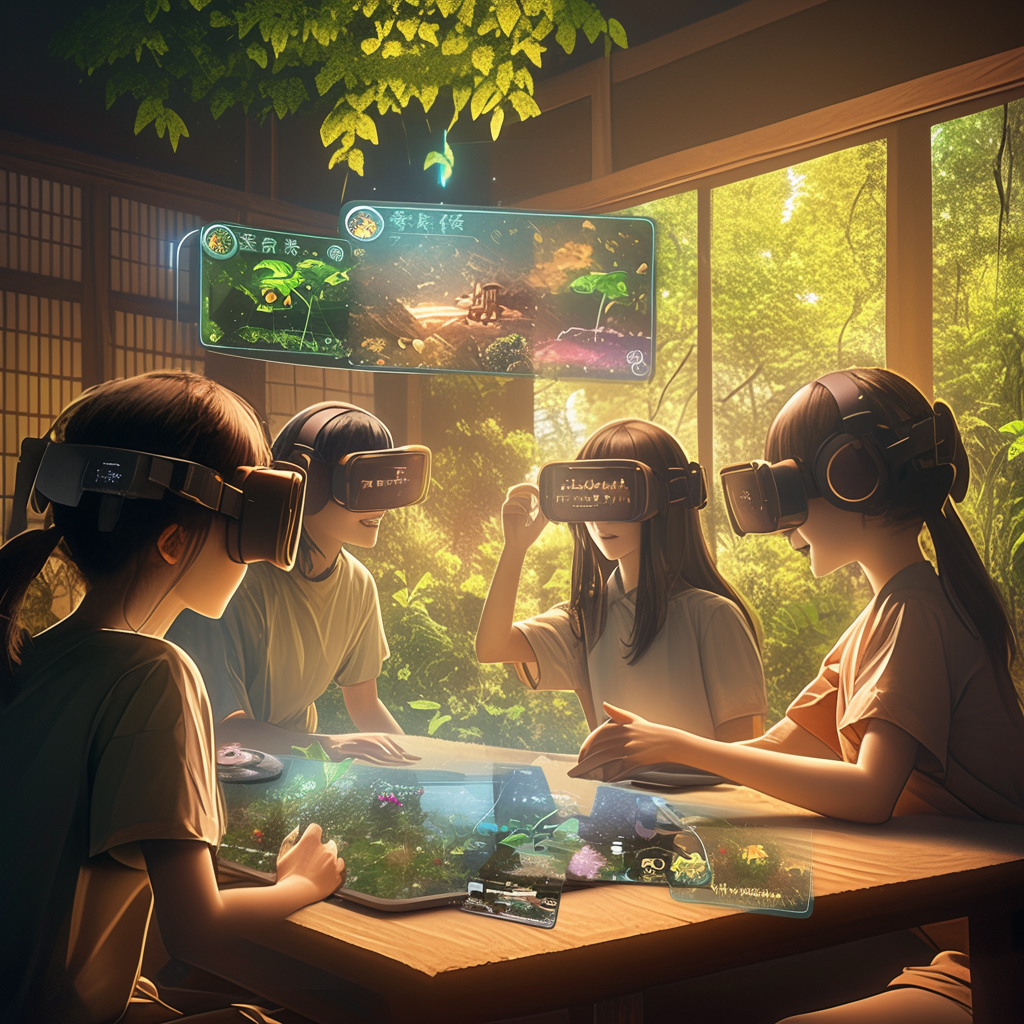
How AI-Driven Creation Tools Empower Educators to Design Interactive Learning Experiences
Share
Introduction
The role of educators is continually evolving in today’s digital landscape, with AI-driven creation tools transforming how lessons are designed and delivered. These innovative tools not only empower educators to craft interactive, engaging learning experiences, but also provide students with opportunities to explore new ways of learning. This article delves into how AI-powered creation tools are revolutionizing education by helping teachers design dynamic, personalized, and interactive lessons that captivate students and enhance their learning outcomes.
The Importance of Interactive Learning
Interactive learning is more than just a buzzword—it's a teaching approach that actively involves students in the learning process, encouraging them to engage with the material, collaborate with peers, and apply their knowledge in real-world scenarios. Research shows that interactive learning can lead to improved retention, deeper understanding, and a more enjoyable learning experience overall. For educators, the challenge lies in designing interactive lessons that can cater to the diverse needs of students.
AI-driven creation tools are bridging this gap, making it easier for educators to design lessons that are not only interactive but also personalized to each student's learning preferences and needs. These tools allow teachers to create dynamic content, quizzes, activities, and simulations that adapt to each student's pace, ensuring a more engaging and tailored learning experience.
How AI-Driven Creation Tools Enhance Educator Efficiency
One of the most significant advantages of AI-powered creation tools is their ability to save educators valuable time while enhancing the quality of their lessons. AI tools streamline various aspects of lesson planning, from content creation to assessment design. Rather than spending hours creating lesson plans and grading assignments, teachers can use AI tools to automate routine tasks, freeing up more time for meaningful student interaction.
For example, platforms like Nibiru Creator enable teachers to create interactive lessons and multimedia content with minimal effort. AI-driven features, such as automatic grading and content generation, allow educators to focus on developing engaging learning experiences rather than getting bogged down in administrative tasks. Additionally, AI tools provide valuable insights into student performance, allowing educators to tailor their approach to individual students' strengths and areas for improvement.
Designing Engaging Interactive Content
With AI-powered creation tools, educators can design content that goes far beyond traditional text-based resources. These tools allow teachers to incorporate various types of interactive content, including multimedia presentations, simulations, virtual environments, and even games. By using AI to design engaging, interactive lessons, educators can create an immersive learning experience that captures students’ attention and motivates them to explore new concepts.
For example, educators can use AI tools to create virtual field trips, interactive science experiments, or even immersive simulations of historical events. These types of experiences help students develop a deeper understanding of the material while fostering curiosity and critical thinking skills. AI-driven platforms like Nibiru Creator also allow educators to create real-time, responsive feedback systems, which can guide students through their learning journey and provide immediate support when needed.
Personalizing Learning with AI
One of the key benefits of AI in education is its ability to personalize learning experiences for each student. Traditional one-size-fits-all teaching methods often fail to meet the diverse needs of students, particularly in classrooms with varying learning speeds and styles. AI-driven creation tools offer a solution by adapting content and activities based on individual students' learning preferences, strengths, and weaknesses.
For example, if a student is struggling with a particular concept, an AI-powered tool can provide additional practice exercises, tutorials, or alternative explanations to help them grasp the material. On the other hand, if a student is excelling, the tool can present more challenging content to keep them engaged and motivated. By personalizing learning experiences in this way, AI tools ensure that all students are given the resources and opportunities they need to succeed.
Real-World Applications of AI in Interactive Learning
The integration of AI in the classroom is already showing promising results, with schools and educators worldwide adopting AI-driven creation tools to enhance their lessons. For example, a high school in California used AI-powered platforms to design an interactive math curriculum that adapted to each student’s learning speed. Students who struggled with basic concepts received extra practice and support, while advanced learners were challenged with more complex problems and activities.
Another example comes from a middle school STEM program that integrated AI-powered interactive simulations into their lessons. Students were able to engage with virtual labs, conduct experiments, and explore scientific principles in a hands-on, immersive environment. The interactive nature of the lessons significantly improved students' understanding of STEM concepts and encouraged them to pursue further learning in the field.
The Future of AI in Education: What’s Next?
As AI technology continues to advance, the potential applications for interactive learning are virtually limitless. In the future, AI tools could become even more sophisticated, offering real-time adaptive learning experiences that respond to each student's progress and needs. We may see AI systems that are capable of analyzing a student's learning patterns and providing customized learning paths to help them achieve their full potential.
Furthermore, AI could be used to design fully immersive, virtual classrooms where students can collaborate, problem-solve, and explore new concepts in a completely virtual environment. These types of experiences would be particularly valuable for remote or hybrid learning scenarios, offering students the opportunity to learn in interactive, dynamic settings regardless of location.
Conclusion
AI-driven creation tools are a game-changer for educators, providing them with the ability to design highly interactive, personalized, and engaging lessons that foster student creativity and enhance learning outcomes. As these tools continue to evolve, we can expect even more exciting possibilities for the future of education. For educators, the integration of AI in the classroom is an invaluable opportunity to innovate and transform the way students learn, making education more interactive, accessible, and effective than ever before.
